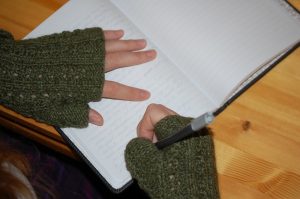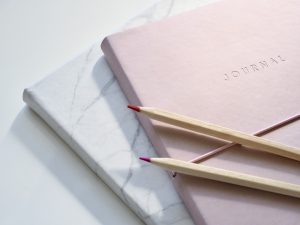Types of Learning Journals
. Posted in Creativity, Journaling, Parent-Child Advice, Teachers
A learning journal is an ongoing collection of writing dedicated to learning–that is, writing done for the purpose of learning rather than the purpose of demonstrating learning. Learning journals are often named for a specific purpose and/or format, such as a creative writing journal. Even a personal blog can be a kind of journal if the blogging is done in order to promote, deepen, or extend learning of some kind.
There are as many types of learning journals as there are ways to think, mainly because writing is a powerful strategy for both documenting and promoting thinking. Below are 20 types of learning journals that can help students think, and would therefore be valuable additions to the classroom or your child’s learning routine.
1. Question Journal. This type of journal is focused on inquiry–the asking and refinement of questions. Questions can either be answered or merely wondered about. The main idea is for students to ask and improve their own questions.
 2. Metacognitive Journal. This journal focuses on thinking about thinking. Students detail their own thinking processes, including their tendencies, changes over time, and potential cognitive blind spots.
2. Metacognitive Journal. This journal focuses on thinking about thinking. Students detail their own thinking processes, including their tendencies, changes over time, and potential cognitive blind spots.
3. Change Journal. All learning should result in personal and social change. Similar to the change in thinking topic in the Metacognitive Journal listened above, a Change Journal frames the writing for learning in terms of change. Sample topics could include how the student’s knowledge changed after a lesson, change in their own behavior as a result of learning, and reflections on how the learning will affect them in the future.
4. Connecting Journal. This is a journal that frames writing through the connections between things. For example, in science this could be writing about how new knowledge connects to old perceptions.
5. Transfer Journal. In this journal, the focus is on students transferring their learning to new and unfamiliar circumstances. For example, if a student learns about migration, a Transfer Journal would allow them to consider how that knowledge might be transferred to and affect current events. They could also focus on transfer of knowledge from within the classroom to real world situations.
6. Wonder Journal. A learning journal similar to the Question Journal, the Wonder Journal would likely feature less detailed and more imaginative entries based on student wondering and musing. For example, students might start an entry with, “I wonder how often Tesla shocked himself” or “I wonder what appeals to readers most about this poem,” and go from there.
 7. Notice Journal. This is very similar to the Wonder Journal, but students would instead begin entries with “I notice” statements and write about their observations.
7. Notice Journal. This is very similar to the Wonder Journal, but students would instead begin entries with “I notice” statements and write about their observations.
8. Visualization Journal. This journal promotes targeted and specific visualization of learning and could feature students creating visual metaphors for the function of something they’ve just learned. An example response might be students drawing construction workers renovating a building–changing drywall or painting the outside of a home, for example. This would distinguish it from the editing stage of the writing process, which includes more minor changes often based on language conventions. A suitable visualization for editing might be someone redecorating a room.
9. Doodle Journal. For this journal, students simply doodle about their learning experience, with no requirement other than being able to explain why they drew what they drew. This can be useful for hesitant writers who also believe they can’t draw, because anyone can doodle.
10. Concept/Example Journal. This type of learning journal promotes abstract thinking through concepts alongside concrete thinking through specific examples. For example, a student learning about gravity could write about it as a concept, especially in relation to other concepts like momentum or centrifugal force. Next, they can write about specific examples of gravity, which is sometimes more visible, immediate, and easier for learners with emerging knowledge.
Tune in to our next post for 10 more types of learning journals.
Allison Green
Boston Tutoring Services
